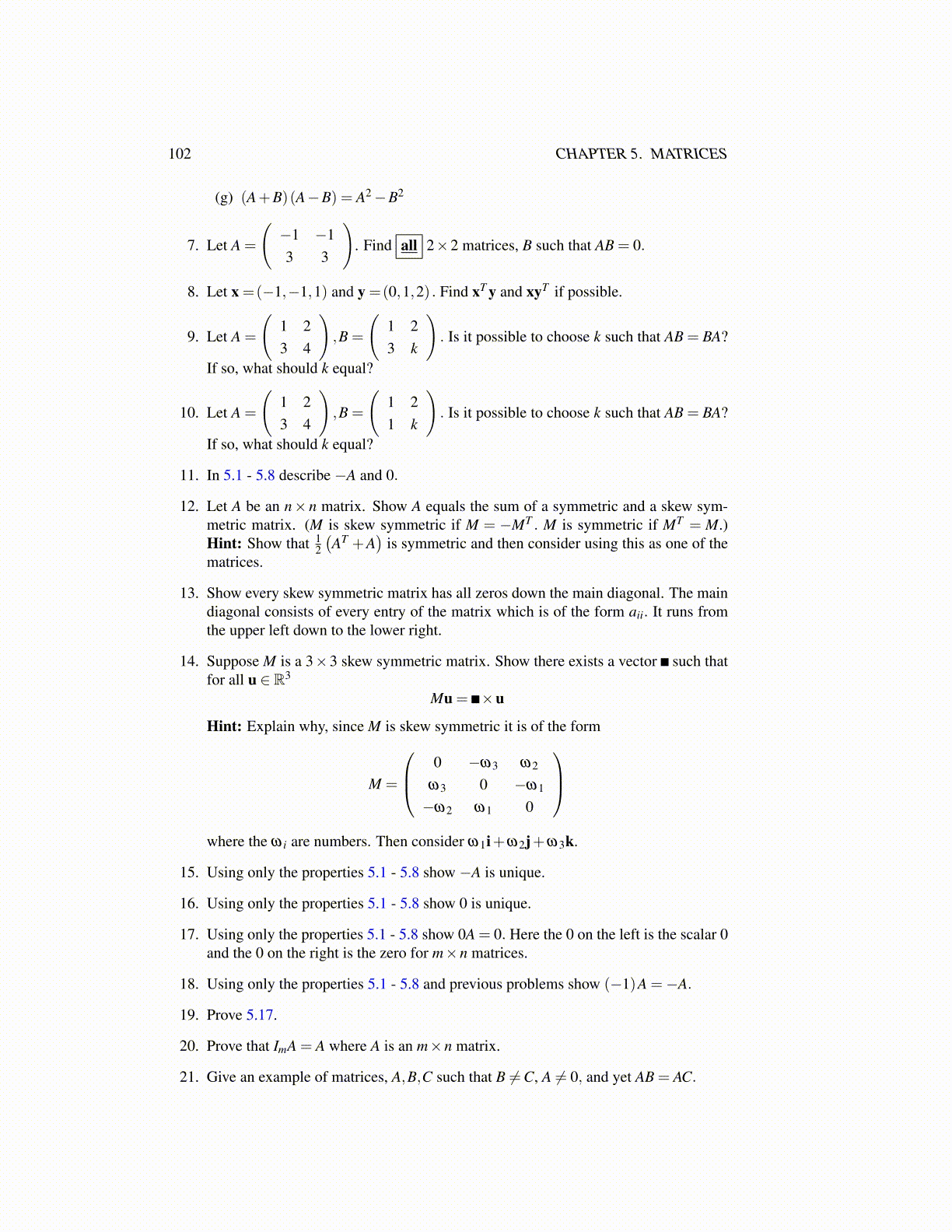
102 CHAPTER 5. MATRICES
(g) (A+B)(A−B) = A2−B2
7. Let A =
(−1 −13 3
). Find all 2×2 matrices, B such that AB = 0.
8. Let x =(−1,−1,1) and y =(0,1,2) . Find xT y and xyT if possible.
9. Let A =
(1 23 4
),B =
(1 23 k
). Is it possible to choose k such that AB = BA?
If so, what should k equal?
10. Let A =
(1 23 4
),B =
(1 21 k
). Is it possible to choose k such that AB = BA?
If so, what should k equal?
11. In 5.1 - 5.8 describe −A and 0.
12. Let A be an n× n matrix. Show A equals the sum of a symmetric and a skew sym-metric matrix. (M is skew symmetric if M = −MT . M is symmetric if MT = M.)Hint: Show that 1
2
(AT +A
)is symmetric and then consider using this as one of the
matrices.
13. Show every skew symmetric matrix has all zeros down the main diagonal. The maindiagonal consists of every entry of the matrix which is of the form aii. It runs fromthe upper left down to the lower right.
14. Suppose M is a 3×3 skew symmetric matrix. Show there exists a vector such thatfor all u ∈ R3
Mu = ×u
Hint: Explain why, since M is skew symmetric it is of the form
M =
0 −ω3 ω2
ω3 0 −ω1
−ω2 ω1 0
where the ω i are numbers. Then consider ω1i+ω2j+ω3k.
15. Using only the properties 5.1 - 5.8 show −A is unique.
16. Using only the properties 5.1 - 5.8 show 0 is unique.
17. Using only the properties 5.1 - 5.8 show 0A = 0. Here the 0 on the left is the scalar 0and the 0 on the right is the zero for m×n matrices.
18. Using only the properties 5.1 - 5.8 and previous problems show (−1)A =−A.
19. Prove 5.17.
20. Prove that ImA = A where A is an m×n matrix.
21. Give an example of matrices, A,B,C such that B ̸=C, A ̸= 0, and yet AB = AC.